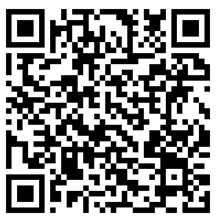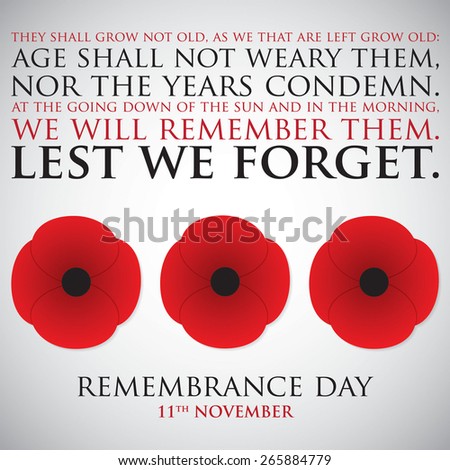Shared by Mariela Rodríguez for 3rd Year ESO:
The activity is
structured in two parts, and they are going to work in couples (it’s a small
group of 17 students).
In the first
part, they are going to create a poster of a chosen Baroque composer in an
online program named canva. This
program is a great tool and has many free templates to create flyers, cards and
posters. The poster needs to catch the attention like an ad, because they are
going to use it as an image for a Spotify playlist.
In the second
part they are going to research about their chosen composer and his/her music,
to have enough information to make a Top
five Spotify playlist and a short verbal presentation. The outlines of the
presentation are as follows:
1. Brief description of the
composer's biography: Ex. Date and place of birth, professional development, any
other information you consider relevant (including gossip).
2. ‘Sell it’. Examples: Why his/her music was
successful in the Baroque period? Why is he or she one of the most well known composers of
our time? Why is his/her music so appealing?
3. Show us the composer top five. Show us the
Spotify list you’ve created with the top
five music pieces of the composer. Specially justify the music you’ve chosen
as number one….
To prepare a successful
presentation, it could be useful to give them keywords that could help them to
describe and explain their subject. I’d rather prefer to do that while
assessing their work in class. They need a lot of assistance to do this kind of
several steps activity, so I think it’s the best option in this case.
Here are some
links to the resources I use in this activity.
Topic: Music in the Middle Ages
Teacher: Patricia Pérez
2. C for Content
|
We will start the Unit revising the contents about musical texture studied last year
through an activity (1)
Then, the teachers will show a mind map to the student and will
explain it. The mind map is in the next link.
After that, the students will listen to some recordings of the theme
and they will do an activity (2) in order to allocate a texture to each type
of music.
|
|
3. C for
Communication
|
Vocabulary
|
The Unit has new vocabulary related to topics of History of music that
the students did not study in the previous year. Some of these new words will
be use through the whole course, so, it is important to spend enough time to
work about them.
New words:
Secular, religious, human beings, day-to day activities, curing
powers, treatises, modes, notation, clergy, monasteries, scribes, monks,
neumes, hymn, plainsong, sacred, troubadours, jongleurs, noble, society, current,
motet, guidelines.
Important verbs:
Link, accompany, develop, become, perform, originate, evolve, measure,
appear, spread, compose, gain, flourish, decline
|
Structures
|
Simple past, passive.
For the activity: interrogative
|
|
Language
skills Discourse type
|
Expository text and discourse using simple past.
We will work the speaking, reading out the contents of the unit with a
special emphasis in the pronunciation on those new words.
Interrogative sentences for the activity
|
|
4. C for Cognition
|
The proposal for this point is the work in a Project that we have
called “Learning music through art”.
The students have to design materials about Music in the Middle Ages
that then, will be shown in a wall of the long hallway that the students
cross to get to the Music room.
|
|
5. C for Culture
|
Linked with the Project “Learning music through art” we will worked
with the teacher of Visual Art (also in the bilingual section).
Meanwhile the students learn about the colour in this subject, they
will practise different tecniques based in the miniature of the Cantigas de
Santa María.
|
|
6. Activities
|
C for Content:
(1)The teacher will give to each student three post-it notes, one red,
one blue and one grey. Then, she will show this video to the students
and will ask them that they will write the definition of the three
main types of texture in the post-it depending on the colour assigned in the
video while they listen and watch it.
They could watch the video for a second time paying attention to the
different textures.
They listen again for a third time but now they will not be able to
watch the video. (We will turn off the screen) They will have to raise the correct
post-it according to the texture that is playing.
(2)With the mind map on the screen, the students will listen some pieces
of music in the Middle Ages. The teacher will say what kind of music the
students are listening to, for instance:
“This is a piece of music of Gregorian chant”
“This is a Cantiga de Santa María”
Alternatively, she will ask to one student to go to the digital
blackboard and to paste the post-it with the name of a texture in the word
ballon. After the activity, the student who have not stand up to paste their
post-it, could correct the work of their classmates.
C for Communication
This activity would be a summary of the contents and
particularly a review of the tracks related with the Unit.
“WHO AM I?” or “GUESS THE TRACK”
A student shows his/her classmates a label with the name of a track
(one from the completed table they did in the Task C for Content) but he/she
cannot see it. Then he/she has to make questions about himself/herself and
the rest of the class will answer yes or no.
The student should try to know which track he or she is.
After the activity:
The activity has worked well because it has been funny for them.
In their English classes, the students usually work the interrogative
sentences using the second or the third person, so it was difficult for them
to make questions using the first person singular
I have done this activity several times because it is easy to adapt to
the most of the contents of the subject.
Changes and improvements: the students can answer raising a green
cardboard instead YES and a red cardboard for the NO. By doing so, the
teacher can be sure that everybody answers and if they give the correct
answer.
There is an alternative for the game: the student in the middle thinks
about a track and the rest of students make questions in order to guess the
track. The student can only answer yes or no.
Follow the link to see a version of the activity working about the
musical instruments. (Published by Patricia Pérez González)
C for Cognition:
The students will work in groups. Each group will choose a topic
related with the Unit and they will decide how they can show the content
through visual materials. They can also use some videos or audios. They could
use QR codes or another augmented reality app like layar, hp reveal…
Due to the characteristics of the subject the students are learning to
use the app Audacity which helps them to edit audios. At the same time, we
are working the digital competence.
The activity has been motivating for the students. They like to work
in groups and they have been keen on the final result. But they have needed a
lot of support in their works, not only with the materials but mainly with
the ideas.
|
|
7. Tasks
|
C for Content:
The students will do a table in their notebooks. In
the table they will write the information that they have until now. The table
will be open and they could complete it during the development of the Unit.
C for Communication
After the activity about the tracks of the unit the
teacher asks to the students to prepare an oral presentation where they
explain the characteristics of the track. Through the music that they have to
explain they should also explain the characteristics of the type of music.
For instance: if a student has to explain “Puer natus est” from the Gregorian
chant, he or she will explain not only the structure of this piece of music
but the general characteristics of the Gregorian chant.
C for Cognition:
After their works in groups they will have to
present their works in the wall.
(After reading the QR code, please click in Browse
website)
|
|
8. Cross-curricular
tasks
|
C for Culture (Activities and
tasks)
Both teachers, Music teacher and Visual Art teacher work together
about the importance of the Cantigas de Santa María from the point of view of
their subjects.
In each class we will analise the miniatures of the book. In fact, in
the Music class we will study the instruments in the Middle Ages through this
creation.
In the Visual Art class (of course with the same group) they will
analise the artistic value of the creation and the use of the colour.
The students will paint some of this images and their final works will
be exhibited in the wall of the hallway.
|
|
Methodology
|
||
9. Organization and
class
distribution. Timing
|
||
10.
Resources and materials
|
The music room will be the main place where we will
develop the Unit but we will spend lot of time in the hallway.
We will use our digital blackboard and our stereo.
We will need some materials as cardboard, post-it,
paint boxes, gouache or others and a printer.
We will have some useful apps within reach:
Youtube, exam time, QR code generator, HP reveal,
Layar, Fotojet, ect.
|
|
11.
Key Competences
|
||
12. Assessment:
criteria and
instruments
|
The oral presentation proposed as a communication activity will be
evaluated with a rubric as it is described below:
|
|

Click on "Topic" to access to the activity:
Cross-curricular(ism): Music, and Social Sciences (Geography)
Teachers: Ana Bernal, Esperanza Arranz
Click on "Topic" to access to the activity:
Cross-curricular(ism): Social Sciences (History)
Teachers: Eva Cinza








No hay comentarios:
Publicar un comentario